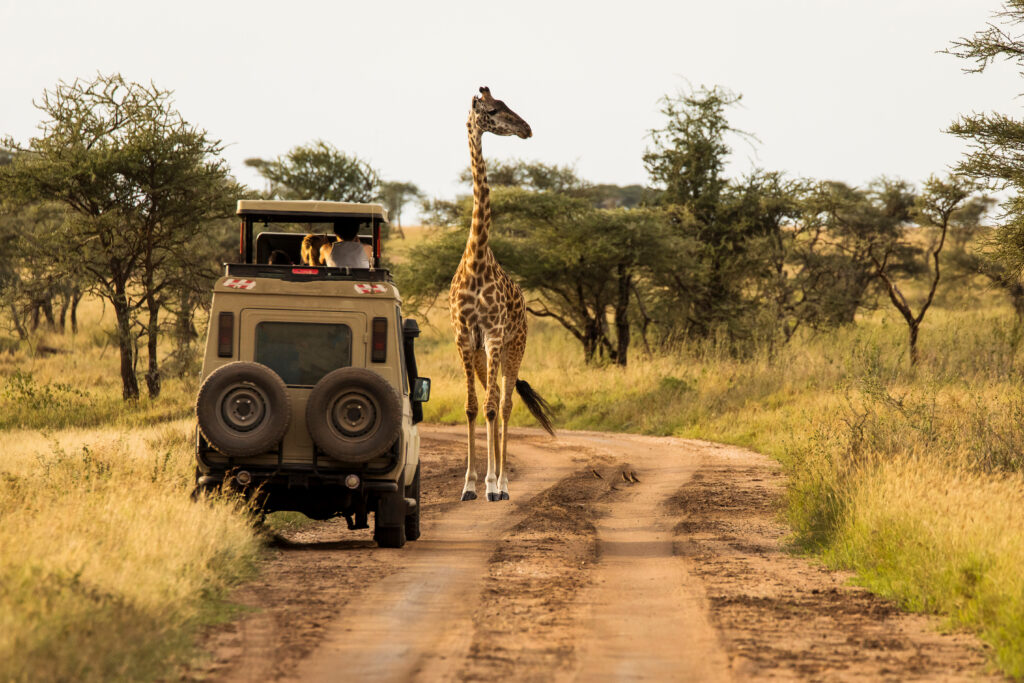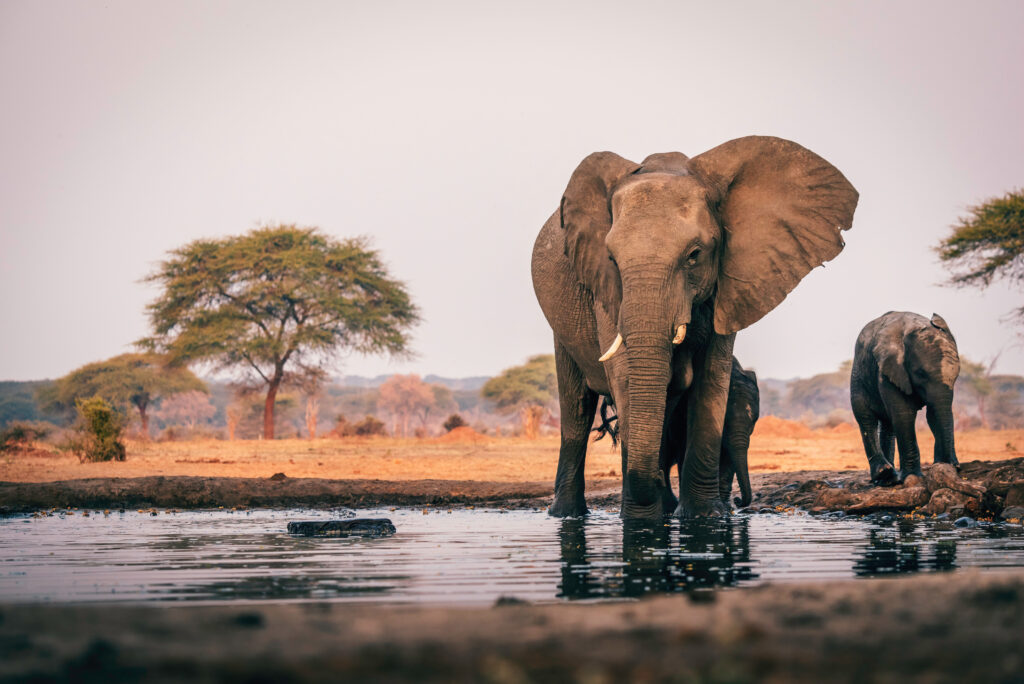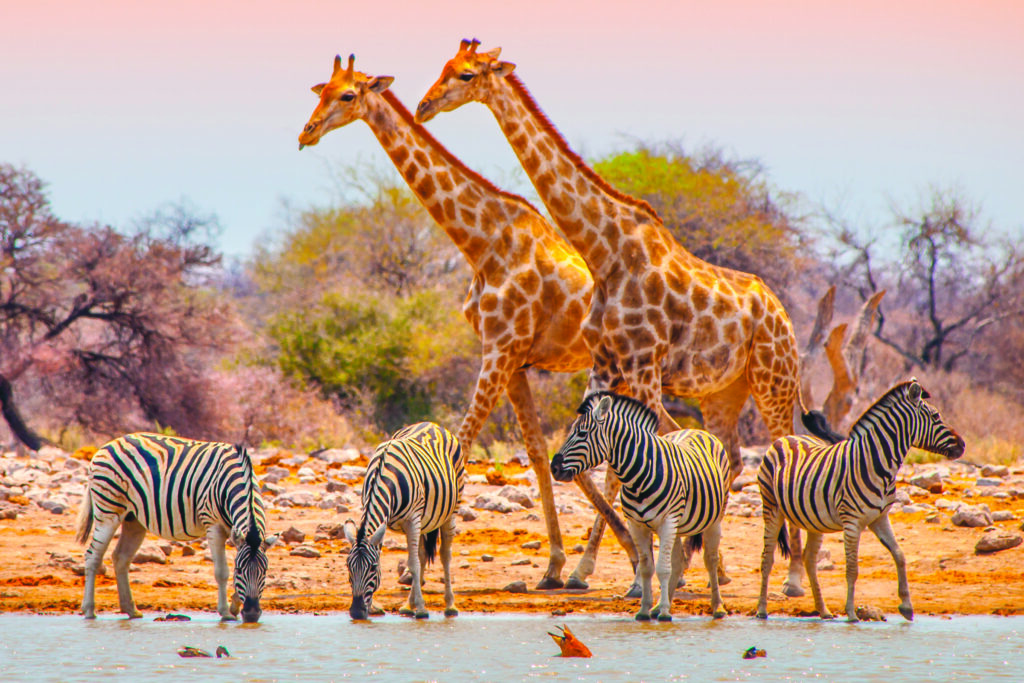
Going on safari is the dream of many nature and wildlife lovers. Whether it's to observe the famous Big Five, follow the discreet trail of the leopard, or discover breathtaking landscapes, choosing the right destination is essential. From wild Africa to Asian reserves, zoom in on the best places to go on safari.
In East Africa, Lion King and gorillas beware!
Tanzania's safaris - and here's everything you need to know about them - are among the most impressive in the world! The great national parks in the north of the country have legendary names, such as Serengeti, Tarangire and Ngorongoro Crater. Their wildlife is exceptionally rich, offering spectacular scenes: lions, leopards and cheetahs roam the vast plains of Serengeti, while elephants abound in Tarangire. The Ngorongoro, a veritable open-air Noah's Ark, is home to an incredible concentration of animals. Further south, other reserves such as Ruaha, Selous (Nyerere NP), Mikumi and Saadani are also well worth a visit. In short, the Lion King is just a stone's throw away from your binoculars!
On safari, you can expect to see the famous "Big Five": lion, leopard, buffalo, elephant and rhinoceros - the latter being a rare sight. But other emblematic animals also attract visitors: the swift and elegant cheetah, giraffes, the symbol of Tanzania, as well as a multitude of antelopes, baboons, hippos and crocodiles.
Read also: Tanzania in 15 days: the best itinerary

As in Tanzania, in Kenya too, people flock to see the famous Big Five. Here, they can be observed up close in their natural environment... And that's what makes Kenya such a popular tourist destination the world over! All the legendary animals you'd dream of seeing on safari are here within camera range: lions, leopards, cheetahs, elephants, buffalo, monkeys, giraffes, zebras, crocodiles, antelopes, hippos and over 1,000 listed bird species, to name but a few. For unforgettable shots, head for the Masai Mara National Reserve, the famous natural extension of the Serengeti in Tanzania, Amboseli National Park and its spectacular views of Kilimanjaro, Tsavo East & Tsavo West National Park, one of the largest in Africa and one of the most beautiful places to see in Kenya, and so many other spots to provoke unforgettable encounters..
Read also: How to go on safari in Kenya What you need to know
A change of atmosphere in Uganda! But for an equally exceptional experience... In this West African jewel, we are delighted to meet the famous mountain gorilla. It has to be said that they are the country's superstars! Of the thousand or so mountain gorillas in the world, almost half are found in Uganda. The authorities are doing their utmost to preserve these great apes through tourism and the payment of a US$800 permit (their population has increased by almost 70% in 30 years). It's not much money, but it's a guarantee of a unique experience, the kind of moment that makes you want to cross the planet! And for that, head first for the Bwindi rainforest, over 25,000 years old and a UNESCO World Heritage Site since 1994, one of the world's richest biodiversity reserves.
Where to go on safari? From Southern Africa to the Atlantic, safaris off the beaten track

Botswana is also one of Africa's most famous safari destinations . From the arid immensities of the Kalahari to the lush green landscapes of the Okavango Delta and the dense forests of Chobe, among the most beautiful places to visit in Botswana, the country offers a wide diversity of ecosystems, home to some of the continent's richest wildlife in exceptional spots. Lions, elephants, buffaloes, giraffes and zebras roam freely across these vast protected territories, just waiting to be explored. Between national parks, reserves and private concessions, Botswana offers varied and unforgettable safaris. The emblematic game drive allows you to get up close and personal with the animals, in an all-terrain vehicle that moves at a slow pace (15 km/h on average). For the adventurous, a self-guided 4x4 trip is an exceptional experience, but requires solid preparation.
In Zambia, a safari is an authentic experience, far removed from the crowds in Tanzania or South Africa. This country is the cradle of the walking safari, a unique approach to observing wildlife up close, accompanied by expert guides. South Luangwa National Park is a must: leopards, elephants, lions and giraffes roam the wilderness. Night safaris are permitted, offering spectacular encounters with nocturnal wildlife. Further south, the Lower Zambezi offers 4x4 safaris, as well as canoeing on the river, in the heart of unspoilt nature. Kafue, immense and little-known, seduces with its flooded plains and rare animals such as wild dogs. The best time to visit is from June to October, during the dry season. With few tourists, Zambia offers an exclusive and unforgettable safari, between wild tracks, majestic rivers and exceptional animal encounters.

When you think Namibia, chances are you think safari. While there are many reserves, farms and game ranches where you can go on safari, the essential Namibian game reserve is Etosha, one of the most beautiful places to visit in Namibia. Just north of the capital, this immense reserve promises a memorable encounter with wild animals. The most emblematic are, of course, the Big Five: lion, elephant, buffalo, rhinoceros and leopard. Beyond these emblematic figures of the savannah, we meet dozens of other species in Namibia: roan antelope, chacma baboon, African buffalo, Cape duiker, ruffed jackal, Cape eland, giraffe, blue wildebeest or black-tailed wildebeest, cheetah, spotted hyena, hippopotamus, impala, kudu, oryx, warthog, white and black rhinoceros, springbok, Hartmann's and Burchell's zebra. Ornithology enthusiasts will look up to catch a glimpse of the tawny eagle, the martial eagle, Archer's francolin, the tax shrike or the sooty souimanga. One of a kind!
Where to go on safari? Elsewhere in the world, from India to Patagonia
Leaving the African continent behind, we head for Asia and the Indian subcontinent, and one of the five natural parks in the state of Rajasthan, Ranthambore National Park. The star of the region's wildlife is the Bengal tiger! Located 180 km from Jaipur and 362 km south-west of Delhi, the park covers an area of around 400 km², offering extraordinary landscapes, lakes and cliffs, marshlands and forests. This is the former hunting ground of the maharajas of Jaipur, and many a hunting party has taken place here, on elephant back to get as close as possible to the felines. Although tiger hunting was only banned in 1970, the government set up the Tiger Project in 1973 to protect the tigers, then on the brink of extinction. At the time, Ranthambore was home to just a dozen tigers. Almost 50 years later, the reserve is home to almost 80.
Read also: What to do in North India? 19 places to visit

Then there's Wilpattu National Park, located in north-west Sri Lanka about 180 km from Colombo, the largest and one of the oldest in the country. Its name, which means "land of lakes", refers to the numerous villus, natural basins that dot the landscape. This mosaic of water and forest is home to a rich fauna: elephants, lippus bears, crocodiles and a wide variety of birds. Wilpattu is best known for its population of leopards, although observing them sometimes requires patience. It is also home to the island's longest snake, the python, with some specimens ranging from 6 to 10 m in length. Less frequented than the famous Yala Park, one of Sri Lanka's must-see attractions, it has a peaceful, wild atmosphere, offering visitors an authentic safari experience. Adventurers beware!
Finally, in Chile, safaris take an original form, focusing on the exploration of vast open spaces and the discovery of local wildlife. In Patagonia, notably in Torres del Paine National Park, one of the most beautiful places to visit in Chile, photo safaris enable visitors to follow in the footsteps of the puma, a majestic and discreet mountain dweller. Guided by experts, visitors travel through grandiose landscapes combining snow-capped peaks, glaciers and vast, windswept steppes. Further north, in the Atacama Desert, vicuñas, foxes, flamingos and a wide variety of birds can be observed in lagoons nestling in the heart of a mineral environment. On the Pacific coast, the Punta de Choros marine reserve offers the chance to see dolphins, sea lions, Humboldt penguins and, depending on the season, whales. In Chile, a safari is above all an immersion in a wild and varied nature, between desert, mountain and ocean. Get your cameras ready!


